How to grow soybeans in the Moscow region
Soybeans are an agricultural legume that is highly productive and unpretentious. In Russia, large volumes of soybeans began to be grown relatively recently, but the sown area is increasing every year. This is explained by the popularity of soy as a valuable food product. Its cultivation aroused interest not only among large farmers, but also among many summer residents. Following a certain technology of cultivation of crops, farmers have consistently high yields.
The content of the article
General information about growing soybeans
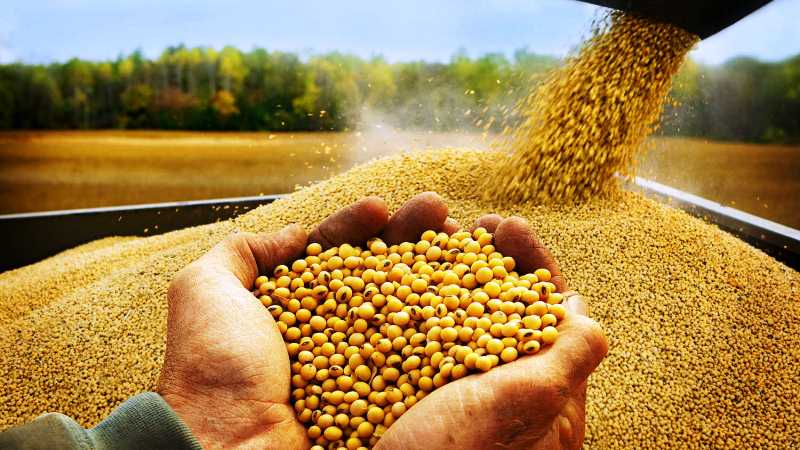
Soy is a unique plant that is considered the best predecessor for many crops, including vegetables. The culture simultaneously performs two important functions: photosynthesis and nitrogen fixation - during the growing season it provides its own needs for nitrogen and significantly increases soil fertility.
Soybeans are characterized by high yields, picky about the type of soil (except sandy), the content of vegetable protein in large quantities. Plantings tolerate frost well, high and insufficient soil moisture, acidity deviations in it.
Under suitable conditions, seedlings rise within a week after sowing. When the seeds are poured, the culture stops growing, and during the ripening of the fruit, it sheds its leaves.
Soy prefers uniform, intense lighting, shading by weeds and trees is unacceptable, plant stems and leaf cuttings are elongated, from which lateral shoots and the beans themselves are not formed, and the ovaries fall off.
A wide variety of varieties makes it possible to cultivate it in a fairly wide temperature regime. Some species tolerate frost up to -3 ° C and heat up to + 37 ° C.
The need for water depends on the stage of the soybean growing season... Well-moistened soil is needed during the periods: seed germination, flowering plantings and crop formation. At low humidity, new flowers and beans are not formed, and existing ones are discarded. Therefore, in arid regions, crops are cultivated under conditions of artificial irrigation.
Mineral fertilizers applied depending on the quality of the soil and climatic conditions. Experts recommend cultivating soybeans in areas cleared of weeds with sufficient reserves of nutrients and moisture. This means that the soil for growing soybeans must be fertile and cultivated, otherwise you cannot do without additional costs for applying a large amount of fertilizer. So in the black earth regions, the culture does not need feeding, since the need for nutrients is satisfied by those already available in the soil.
Is it possible to grow soybeans in the Moscow region and how effective is it
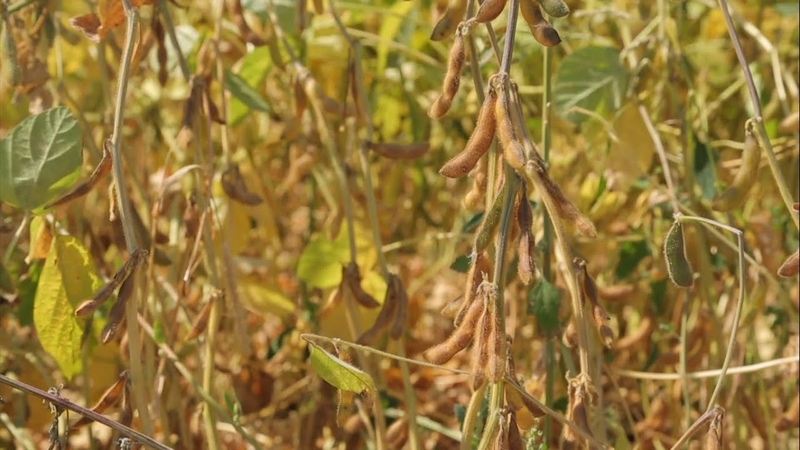
The climatic conditions of the Moscow region limit the cultivation of some plant varieties, since cold snaps occur in August and September (about + 15 ° C during the day, + 10 ° C and below at night). Under such weather conditions, soybeans slow down the process of filling and ripening of fruits. At the same time, it is extremely important that by the beginning of this period the culture has almost completely completed the growing season, otherwise maturation will stretch for an indefinite time.
The sown area of soybeans in the Moscow region is about 1,559 hectares. For this zone, the breeders have determined the most acceptable conditions for the cultivation of crops, allowing the crop to form and ripen in time.Thanks to this, it became possible to successfully cultivate it both in Moscow and in other regions of central Russia. The best varieties of soybeans with an early ripening period are: Viliya, Mageva and Yaselda. Every year the yield of leguminous crops is increasing (according to the latest data - 4.35 million tons against 3.9).
Important! Sowing is recommended at the end of the first - beginning of the second decade of May.
How to plant soybeans, agricultural technology
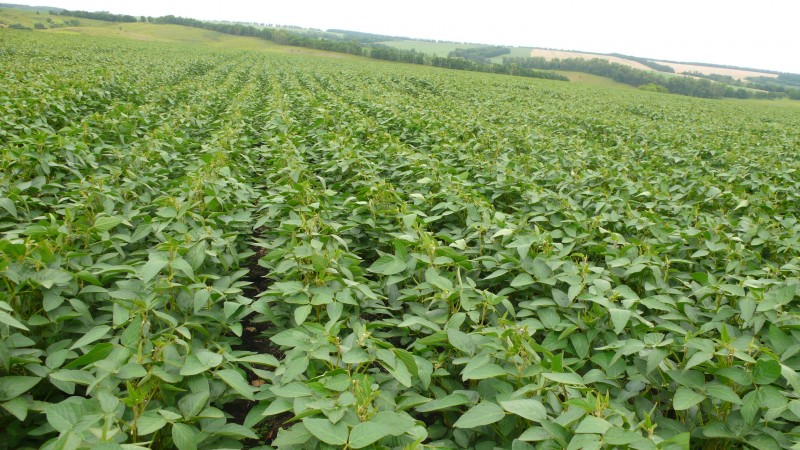
Soybean growing technology consists of several stages:
- soil preparation;
- selection of varieties and processing of seed material;
- sowing;
- care;
- harvesting.
Soil preparation
A plot intended for sowing a culture is allocated in an open place, where there is enough light and heat, it is prepared in advance... The land is cultivated in the fall, choosing the remains of crops and weeds (one or two peeling is carried out to a depth of 8-10 cm) and fertilizers are applied for plowing: 10-15 g of potassium chloride and 10-12 g of superphosphate per sq. m.
In the spring, the site is harrowed, leveled. It is important that the surface of the planted area is as flat as possible, as the fruits bend low above the ground and require a low cut during harvest.
Soy is planted on loose, neutral or slightly acidic, well-fertilized soil. Acidic and salty ones with high groundwater levels are not suitable.
Every year a new place is chosen for the culture, preferably after perennial grasses, potatoes, corn, beets, cereals. For moisture-loving soybeans, unsuitable predecessors are those that greatly dry out the soil - these are legumes, tomatoes, sunflowers, cabbage.
Soybean seeding rate per 1 ha in kg
Seed consumption depends on the plant variety, sowing method, germination and plant survival. As a rule, sowing is 30-35% more than the optimum density of mature plants. The rate is increased if the field is fertile and well supplied with moisture, if it is lacking, it is reduced.
The seeding rate of soybeans varies from 40 to 60 kg / ha for grain and 120 kg / ha for hay. The average planting density is 35-40 seeds per meter. With an increase in the row spacing, the seed consumption also increases - by 10-20%.
When to sow soybeans
Soybeans are capable of sprouting already at + 6 ... + 7 ° C. But sowing too early is not recommended due to the high risk of weed overgrowth, which will impede the growing season of the crop and reduce the yield. If sown later than the recommended date, due to possible high temperatures in summer, the number of fruits will be significantly reduced.
When sowing a crop, be guided by the local climate and weather conditions. In years with an early and warm spring, soybeans are planted at the end of April, and with a prolonged cool spring - at the beginning to mid-May.
In any case, breeders wait until the sown soil layer warms up to 8-10 ° C, avoiding the danger of severe frosts and prolonged cold snaps. During this period, weeds appear en masse: wild oats, field mustard, wild radish, bindweed and others, which is an indirect indicator of the onset of a suitable time for sowing a crop.
It is interesting:
Varieties and varieties of beans: horse (garden), decorative.
Green mung beans - what they are and how they are useful.
The best recipes for pickled asparagus beans for the winter.
Sowing process
Sowing material is purchased taking into account the tolerance of varieties of soil and climatic conditions and is pretreated with special means for resistance to diseases.
Reference! Soybean seeds become unusable after 2-3 years. Most other legumes retain their sowing qualities for 5-7 years.
Seeds are laid in rows, between which a distance of 45 cm is observed. Taking into account some peculiarities when growing soybeans on an industrial scale (automation of irrigation, passage of equipment, etc.), planting is practiced in rows with an interval of 400-600 mm. Soybeans have lush, juicy greens, so large gaps are left for the sun's rays to reach all parts of the plant.
The distance between plants in a row is 10-15 cm.The recommended seeding depth is 3-5 cm. The soil must be sufficiently warm, therefore, with early sowing, the depth is reduced, with late sowing, it is increased. Early ripening varieties are sown in mid-May, late ripening is more expedient to plant earlier.
Crop care
Soybeans germinate within 7-9 days. During this time, a lot of weeds appear, which retards the growth of young seedlings and prevents a healthy and abundant harvest.
Weed control
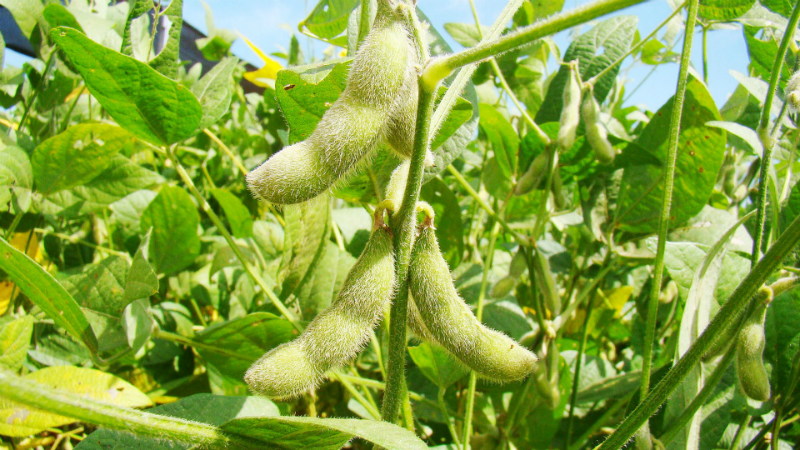
Weeds deprive young shoots of light, nutrition and moisture. The main crop pollutants are annual dicotyledonous and cereal weeds. Weeding is used against them: chemical, mechanical (harrowing) and manual.
If soybeans are grown without the use of weed control preparations, several pre-emergence harrows are performed. This procedure creates optimal conditions for the development and growth of culture. But on too littered fields, one cannot do with agrotechnical measures. This is a rather time-consuming and almost impossible task. Currently, the chemical method is preferred in weed control.
Highly effective soil herbicides
Soil herbicides destroy weed seedlings and inhibit the germination of new ones for 15–35 days, depending on the herbicide used. For the successful action of the preparations, the soil must be fine crumbly and moist.
When growing soybeans, the following soil herbicides and their combinations are used:
- "Pendimethalin";
- Zenkor;
- Treflan;
- "Pivot";
- Pulsar 40 and others.
Attention! It is important to choose the right type of herbicide and its amount so that the soil biota is not destroyed.
Instructions and stages of application
Weeds grow rapidly and constantly. Therefore, a mixed scheme for the use of herbicides is chosen: soil - since there is soil moisture and conditions for their use, and post-emergence - as needed for additional cleaning of fields.
Complex of measures:
- The first herbicidal treatment is carried out after sowing before seed germination with the preparation "Artist" 2-2.5 kg / ha or "Zenkor Liquid" 0.5 l / ha on light soils, 0.7 on medium and heavy soils.
- The next one is performed as needed: "Galaxy Ultra" 1.5-2 l / ha in the early stages of weed development or "Maxi Moks" 0.75-1 l / ha.
- The third - also by necessity: "Achiba" 1–2 l / ha.
Fertilizers for soybeans
The type and amount of fertilizers for soybeans are selected depending on the following factors:
- The predecessor crop, which grew at the site of sowing of soybeans.
- Soil depletion (soil analysis is carried out).
- Soybean varieties.
Usually, before sowing, fertilizers are applied per hectare in the amount of:
- manure - 5-10 tons;
- nitrogen - 30-40 kg (starting recommended dose);
- phosphorus - 15-30 kg;
- potassium oxide - 80 kg (a necessary element for the development of the root system, which reacts under the condition of sufficient soil moisture);
- sulfur - 20 kg.
The amount of trace elements to be added is determined by laboratory analysis of the soil.
Harvesting
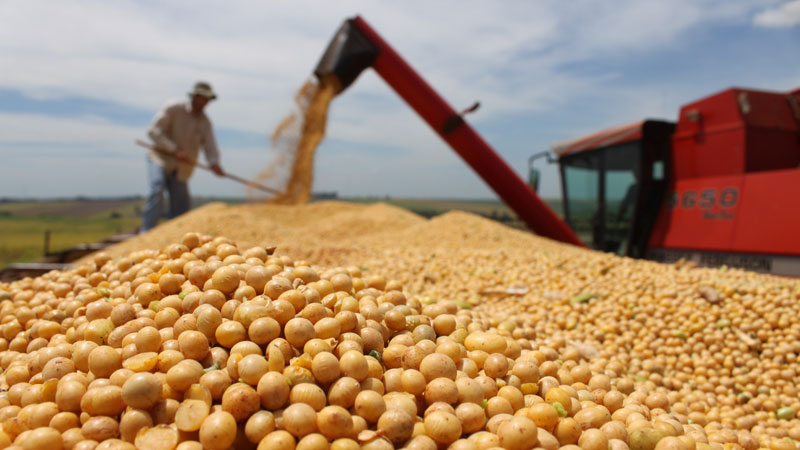
The ideal grain moisture content for harvesting is 13-14%, with this indicator it is minimally injured and easily processed. Wet raw materials have a higher rejection rate during harvesting, moreover, it requires proper drying. It is important not to delay the time with mowing, because literally within two days the pods will dry out, open, and the seeds will crumble. In the fields, soybeans are harvested by ordinary direct combining, in the personal plot by hand.
Ripening terms
After 100-150 days from the moment of sowing (depending on the variety), the harvest begins. Early maturing varieties are harvested in mid-August, late-maturing species in the second or third decade of September. The full ripeness of soybeans occurs when the leaves of the plant fall off, the stems and beans turn brown, the pods are easily split, and the seeds are well separated.
Soybean yield from 1 ha
In central Russia, early-ripening varieties have the highest yields, where an average of 10 centners of soybeans per hectare are harvested without irrigation, and up to 25 centners per hectare with timely and sufficient irrigation of fields. In the south, the yield per hectare reaches 50 centners, in the north 10 centners.
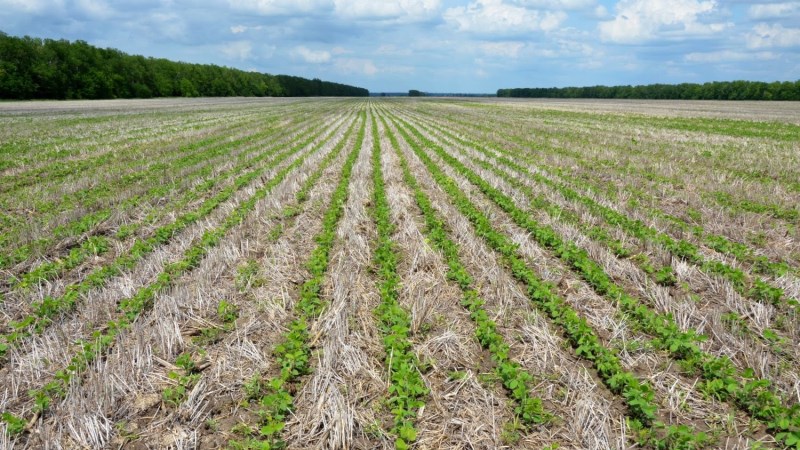
Conclusion
Under favorable weather conditions, the right approach and compliance with all the requirements of agricultural technology for growing soybeans, agricultural enterprises achieve high results in harvesting. A unique crop gives not only profit in the form of finished products, but also significantly improves the condition of the soil, which contributes to an increase in the yield of crops that are planned to be grown after soybeans.